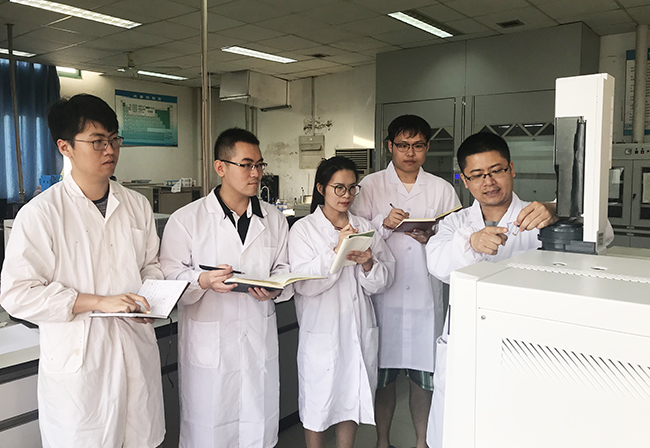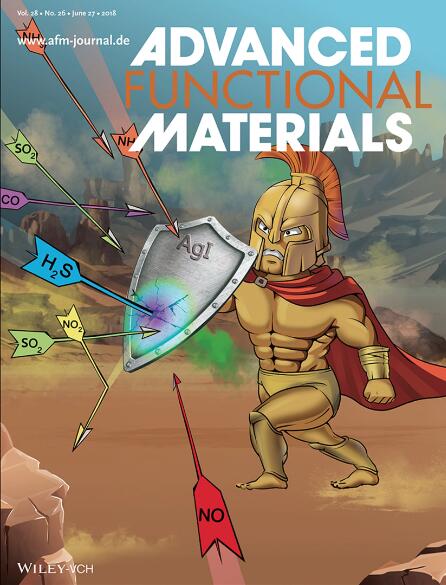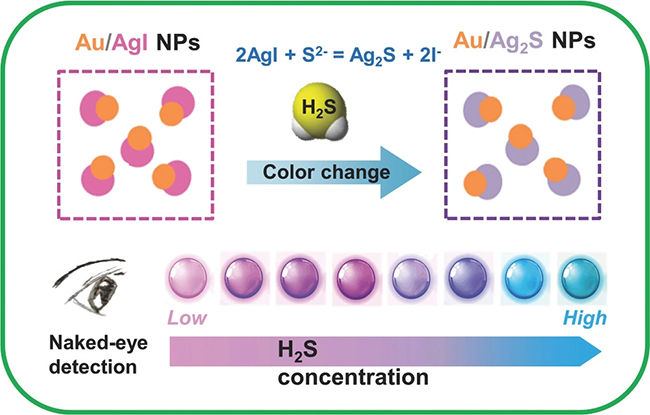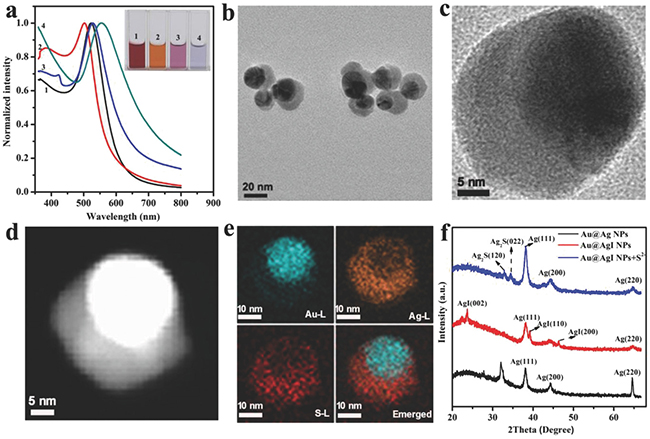Recently, ZENG Jingbin, the asssociate professor from College of Science, in cooperating work with professor YIN Yadong from University of California, made new breakthrough on the research of Au/AgI Dimeric Nanoparticles Colorimetric Detection. The paper Au/AgI Dimeric Nanoparticles for Highly Selective and Sensitive Colorimetric Detection of Hydrogen Sulfide was published on Advanced Functional Materials. Zeng Jingbin was the first author.

Among the five senses of human cognition, vision is the most sensitive, intuitive and accurate one for accepting information. The colorimetric analysis is a method of determining the concentration of a chemical compound in a solution by measuring a given color in terms of a standard color gradients. In recent years, colorimetric methods based on plasmonic nanomaterials have been widely used for the detection of various targets such as proteins, DNA, metal ions, and small molecules due to their higher molar absorption coefficients than organic dyes. Although such methods generally have high sensitivity, they often have the following disadvantages: (1) most nanoprobes are not specific towards the targets, and the detection process is prone to false positives; (2) most nanoprobes are usually present in the liquid phase, so there is still some difficulty in achieving in-situ detection for most gases; (3) lacking test strips that can be enriched in situ for trace targets and compatible for subsequent spectral detection.



For addressing the aforementioned challenges, the research team of Jingbin Zeng (China University of Petroleum (East China)) collaborated with Yadong Yin from the University of California, making a progress in the study of plasmonic-based colorimetric sensing, which is published as a cover article in Advanced Functional Materials entitled “Au/AgI Dimeric Nanoparticles for Highly Selective and Sensitive Colorimetric Detection of Hydrogen Sulfide. In this work, they prepared Au/AgI nanoparticles possessing unique dimeric structures which are ideally suited for the colorimetric sensing of hydrogen sulfide. The detection mechanism is designed by taking advantage of the chemical transformation of AgI to Ag2S upon reacting with sulfide, which leads to a shift in the plasmonic band of the attached Au NPs. The plasmonic shift is accompanied by a color change of the solution from purplish red to blue and finally to light green depending on the concentration of sulfide, thus enables a naked-eye readout and UV–vis quantitation of the sulfide exposure. This method is highly selective toward sulfide since very few interfering compounds except sulfide can react with the stable AgI.The Au/AgI dimeric NPs are further immobilized in agarose gels to produce test strips, which can be used for both naked-eye readout and quantitative detection of sulfide using UV–vis spectroscopy thanks to its transparency in the visible region. Compared to commercial Pb(Ac)2 test papers, the agarose gel strip has superior performance for detecting sulfide in terms of sensitivity, selectivity, stability, and fidelity. The agarose gel is also capable of detecting gaseous H2S at important concentration thresholds, suggesting its practicability in real life applications. The potential of agarose gels is further highlighted by its ability in the enrichment and colorimetric detection of gaseous H2S released during cell cultivation.
More information about the research:
https://onlinelibrary.wiley.com/doi/10.1002/adfm.201800515
https://onlinelibrary.wiley.com/doi/abs/10.1002/adfm.201870176
http://www.materialsviewschina.com/2018/06/29139/
Source: UPC News Center
Updated: 2018-07-13